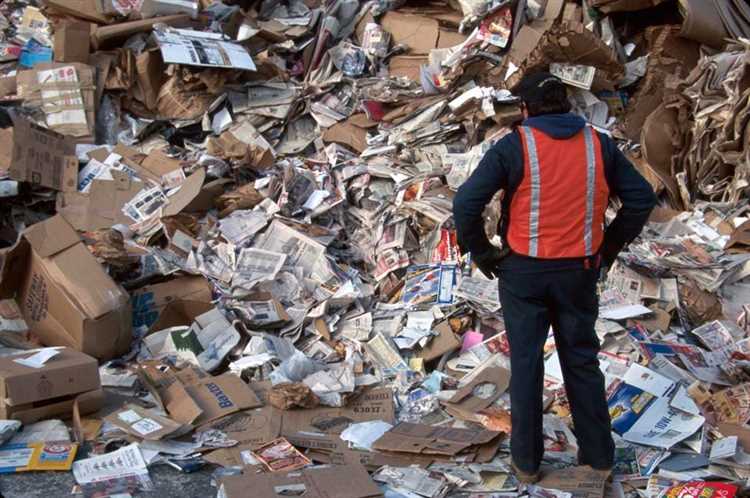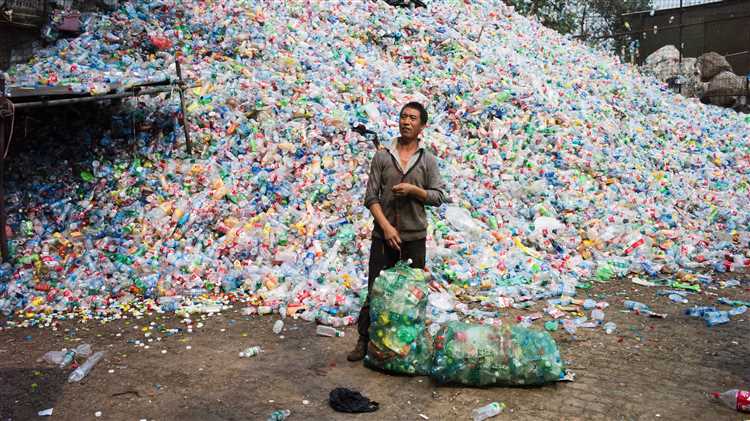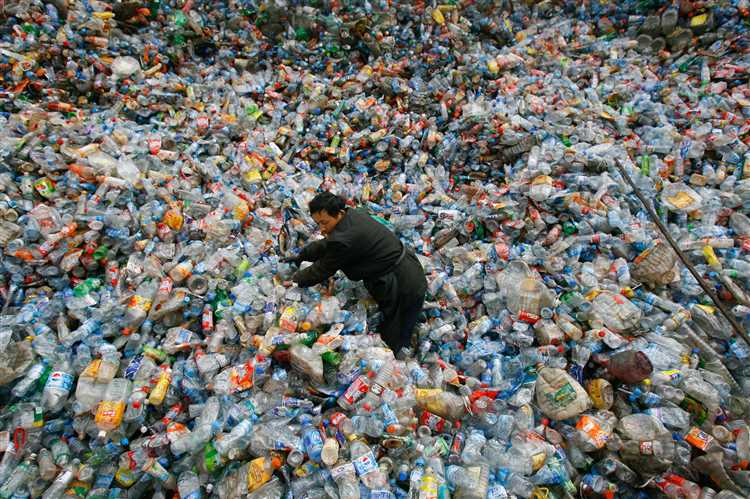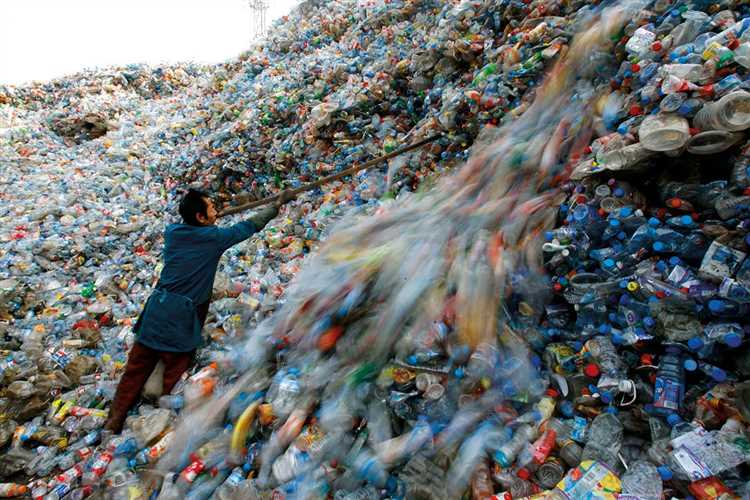In recent years, China’s decision to stop accepting certain types of recycling materials from other countries has caused a significant disruption in the global recycling industry. This shift has left many wondering why China made this decision and what it means for the future of recycling. Understanding the reasons behind China’s refusal of our recycling is essential in order to find sustainable solutions and ensure the long-term viability of recycling practices.
One of the main reasons behind China’s refusal of our recycling is the issue of contamination. China has been facing major environmental and health problems due to the high levels of contamination in the recycling materials it received. Many countries, including the United States, often send contaminated recycling to China, which includes non-recyclable items and materials that are not properly sorted. This contamination not only poses a threat to China’s environment but also to the health and safety of the workers involved in the recycling process.
Additionally, China’s efforts to prioritize its own domestic recycling industry have also played a role in its decision to refuse our recycling. In recent years, China has been investing heavily in developing its own recycling infrastructure and technologies. By refusing to accept recycling materials from other countries, China aims to protect and support its domestic recycling industry. This shift is part of China’s larger goal of becoming a global leader in sustainable recycling practices.
Another factor to consider is the changing economic landscape. China used to import large amounts of recycling materials as a source of raw materials for its manufacturing industries. However, as China’s economy has evolved and its focus has shifted towards high-tech manufacturing, the demand for certain types of recycling materials has decreased. By refusing our recycling, China can better allocate its resources and focus on industries that are more economically beneficial.
- China’s Refusal to Take Our Recycling: Understanding the Shift
- The Growing Environmental Concerns
- The Impact of Contaminated Recycling
- 1. Increased Processing Costs
- 2. Reduction in Recycling Rates
- Changes in China’s Environmental Policies
- Tighter Restrictions on Imports
- National Sword Policy
- FAQ:
- Why has China stopped accepting our recycling?
- What are the environmental concerns that led to China’s decision?
- How has China’s decision affected recycling efforts in other countries?
- What are the countries doing to solve the recycling issue after China’s refusal?
- Is there any hope for a solution to the recycling problem in the future?
China’s Refusal to Take Our Recycling: Understanding the Shift

Over the years, China has been the main destination for the Western world’s recycling, but in recent times, they have abruptly changed their stance. This has left many countries grappling with the challenge of finding new solutions for managing their waste.
One of the key reasons behind China’s refusal to take our recycling is their push for environmental sustainability. The country has faced severe environmental issues due to its rapid industrialization, leading to high levels of pollution and waste. As a result, Chinese authorities have implemented stricter regulations to protect their environment.
China’s decision to stop accepting foreign recycling is also influenced by their desire to focus on their domestic recycling industry. By banning the import of foreign waste, China aims to encourage the development of its own recycling capabilities and reduce its reliance on imported materials.
Another factor contributing to China’s change in attitude is the contamination of recyclables. For years, Western countries have been sending contaminated and poorly sorted recycling to China, resulting in significant environmental and health risks. China is now demanding cleaner and higher-quality recycling, which many exporting countries struggle to meet.
The economic factor also plays a role in China’s decision. In the past, importing recycled materials from Western countries provided China with a cheap source of raw materials. However, as the country’s economy has grown, its demand for recycled materials has decreased, making it less financially viable for China to continue importing waste.
The sudden shift in China’s recycling policy has had a massive impact on the global recycling industry. Many countries are now forced to find alternative markets or invest in their own recycling infrastructure. This shift has also led to increased awareness of the need for better recycling practices and the development of more sustainable waste management systems worldwide.
- In conclusion, China’s refusal to take our recycling is driven by their commitment to environmental sustainability, their desire to develop their domestic recycling industry, the contamination of recyclables, and the changing economic landscape. Understanding the reasons behind this shift can help countries adapt their recycling practices and explore alternative ways to manage their waste.
The Growing Environmental Concerns
As the global population continues to increase, so does the amount of waste we produce. With the rise of consumerism and the disposable culture, the world is facing a growing environmental crisis. The improper disposal and management of waste have led to pollution of land, air, and water resources. Governments and organizations around the world are now starting to realize the urgency of addressing these concerns and implementing sustainable waste management practices.
China, once known as the world’s largest importer of recyclables, has recently implemented strict policies on the importation of foreign waste. This decision stems from their own growing environmental concerns. The country has witnessed the negative impacts of excessive waste generation and improper disposal, leading to soil and water contamination, air pollution, and public health issues. China’s decision to limit foreign waste imports is a response to this mounting environmental crisis.
One of the main concerns is the contamination of recyclables. Poorly sorted and contaminated materials make it difficult and economically unviable for Chinese recycling facilities to process. Mixed in with recyclable materials are non-recyclable items, hazardous substances, and other contaminants. These contaminants not only lower the quality of recycled materials but also pose a risk to human health and the environment.
Add to that the carbon footprint associated with transporting recyclable materials from around the world to China. The long-distance transport releases greenhouse gases into the atmosphere, contributing to climate change. With a goal to reduce their environmental impact and shift towards a more sustainable approach, China has decided to focus on domestic waste management instead of relying on imported recyclables.
Furthermore, as China’s economy has grown, so has its own consumption and waste generation. Without proper measures in place, the country faced a waste management crisis of its own. By limiting foreign waste imports, China aims to divert its attention and resources to managing their own waste more effectively.
While the shift in China’s policy has caused disruptions in the global recycling industry, it has also served as a wake-up call for other countries. We must recognize the importance of addressing our own waste management practices and striving for sustainable solutions. The growing environmental concerns require collective action and a shift towards a circular economy where waste is minimized, resources are conserved, and recycling is prioritized.
The Impact of Contaminated Recycling
Contamination in recycling refers to the presence of non-recyclable materials in the recycling stream. These materials can include food waste, plastic bags, and other items that cannot be processed or recycled. The presence of contaminants has a significant impact on the efficiency and effectiveness of the recycling process.
1. Increased Processing Costs

One of the main impacts of contaminated recycling is the increased costs associated with processing and sorting the materials. When recyclables are contaminated, additional labor, time, and resources are required to separate the non-recyclable items from the recyclable ones. This adds significant costs to the recycling process, which may make it less financially viable for recycling facilities.
Moreover, contaminated recycling can damage the materials processing machinery. For example, plastic bags can become tangled in the sorting equipment, leading to breakdowns and disruptions in the recycling process. These repairs and maintenance can further add to the financial burden on recycling facilities.
2. Reduction in Recycling Rates

The presence of contaminants in recycling can also lead to a reduction in recycling rates. When contaminated materials are mixed with recyclable items, it becomes more difficult and time-consuming to process and sort the recyclables. As a result, recycling facilities may be forced to reject entire batches of contaminated materials, diverting them to landfills instead.
This reduction in recycling rates can have negative environmental consequences. Landfills take up valuable land, emit greenhouse gases, and contribute to soil and water pollution. Additionally, when recyclable materials are not properly recycled, virgin resources may need to be extracted and processed, further depleting natural resources and contributing to climate change.
It is important for individuals and organizations to be mindful of what they put in recycling bins to minimize contamination and ensure the success of recycling efforts.
In conclusion, the impact of contaminated recycling is twofold, affecting both the financial viability of recycling facilities and the overall recycling rates. By understanding how contamination impacts the recycling process, we can work towards more sustainable and efficient recycling practices.
Changes in China’s Environmental Policies
China has made significant changes to its environmental policies in recent years, particularly in regards to the importation of foreign waste and recycling materials. These policy changes have had a major impact on the global recycling industry and have caused countries around the world to reevaluate their recycling practices.
Tighter Restrictions on Imports

One of the key changes made by China was the implementation of tighter restrictions on the importation of foreign waste materials. In 2018, China announced a ban on the importation of 24 types of solid waste, including certain plastics and unsorted paper. This ban was part of China’s efforts to improve its own environmental standards and reduce pollution.
National Sword Policy

In addition to the import ban, China also introduced the National Sword policy. This policy imposed stricter quality standards on the remaining waste materials that were still allowed to be imported. It required that these materials be cleaner and more easily recyclable, which posed a significant challenge for many countries whose recycling systems were not equipped to meet these requirements.
These policy changes have had a significant impact on the global recycling industry. Many countries that had been relying on China as a destination for their recycled materials were forced to find alternative solutions. Some countries have developed new domestic recycling infrastructure, while others have redirected their exports to other countries in Southeast Asia.
Overall, China’s changes in environmental policies have forced countries around the world to reassess their recycling practices and find more sustainable solutions. This shift has highlighted the importance of developing stronger domestic recycling capabilities and finding innovative ways to reduce waste and promote a circular economy.
FAQ:
Why has China stopped accepting our recycling?
China has stopped accepting our recycling due to concerns about environmental pollution and its own limited capacity to process the massive amounts of waste being sent to the country.
What are the environmental concerns that led to China’s decision?
China’s decision to stop accepting our recycling is primarily driven by concerns about the contamination and pollution caused by the low-quality recycling materials being sent to the country. This waste often contains hazardous materials or non-recyclable items, making it difficult and costly for China to properly process.
How has China’s decision affected recycling efforts in other countries?
China’s decision has significantly affected recycling efforts in other countries. With China no longer accepting a large portion of the world’s recycling materials, many countries are struggling to find new markets or solutions for their waste. Some countries have been forced to landfill or incinerate their recycling, while others are investing in building domestic recycling infrastructure to handle the waste.
What are the countries doing to solve the recycling issue after China’s refusal?
After China’s refusal to accept recycling, many countries are exploring new solutions to the recycling issue. Some countries are investing in domestic recycling infrastructure, building new facilities to handle the waste within their own borders. Others are looking for alternative markets to export their recycling materials to, such as Southeast Asian countries or countries in Africa.
Is there any hope for a solution to the recycling problem in the future?
There is hope for a solution to the recycling problem in the future. Countries are increasingly recognizing the need to reduce waste and improve recycling practices domestically. This includes initiatives to reduce single-use plastics, improve recycling technology, and promote a circular economy. Additionally, international collaboration and cooperation are crucial in finding sustainable solutions to the global recycling crisis.